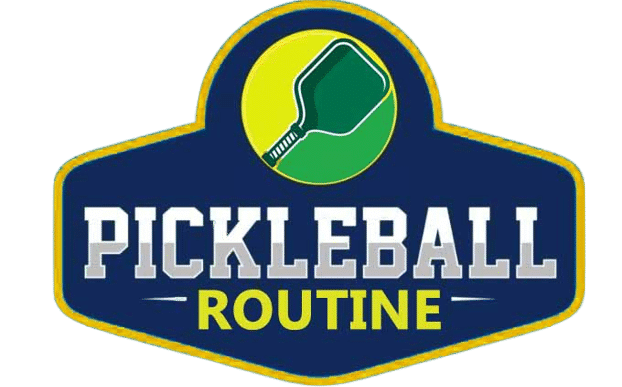Pickleball, a paddle sport that combines elements of tennis, badminton, and table tennis, has gained immense popularity in recent years. It is typically played on a hard surface, such as asphalt or concrete. However, enthusiasts of the game often wonder whether pickleball can be played on clay courts.
Clay courts, known for their use in tennis, offer different playing characteristics and may present unique challenges for pickleball players. In this article, we will explore the feasibility and considerations of playing pickleball on clay courts.
The uniqueness of playing Pickleball on clay courts
Playing pickleball on clay courts offers a unique experience that sets it apart from playing on traditional hard surfaces. Clay courts generally slow down the ball compared to hard surfaces.
This slower ball speed allows players more time to react, adjust their positioning, and execute their shots. It can add a strategic element to the game, as players have to rely more on shot placement and anticipation rather than relying solely on power and speed.
In addition to this, the softer nature of clay courts leads to a higher ball bounce. The increased bounce can provide players with more opportunities to reach and return shots that would typically be considered out of reach on hard surfaces.
It encourages longer rallies and requires players to adapt their timing and footwork to accommodate the different ball trajectories.
Playing pickleball on clay courts requires players to adjust their tactics and strategies. The slower ball speed and higher bounce might favor players who excel in shot placement, accuracy, and patience.
It can encourage players to focus more on constructing points, setting up shots, and employing finesse rather than relying solely on power and aggressive play. Also, clay courts offer greater traction compared to hard surfaces.
This increased grip allows players to make quick, precise movements and change direction efficiently. It can lead to more controlled footwork and better stability on the court, which can positively impact overall gameplay.
Pickleball play on clay courts
Playing pickleball on clay courts requires some adjustments and considerations. Here are some guidelines on how to play pickleball on clay courts:
Check court regulations
Before playing pickleball on a clay court, ensure that the court allows for pickleball play. Some tennis clubs or facilities may have specific rules regarding the use of clay courts for other sports.
Court preparation
Clay courts require regular maintenance, including watering and grooming, to maintain their playing characteristics.
Ensure that the court is properly prepared and in good condition before starting your game. This may involve raking or rolling the court surface to ensure a level playing field.
Adapt court dimensions
Standard pickleball courts are smaller than tennis courts. If playing on a full-sized clay tennis court, you may need to modify the court boundaries to fit within the pickleball court dimensions of 20 feet by 44 feet.
Temporary lines or markings can be used to define the appropriate boundaries for pickleball play.
Adjust equipment
Pickleball paddles and balls are typically designed for use on hard surfaces. While they can be used on clay courts, it’s important to note that the texture of the clay surface may cause increased wear on the paddle face.
Consider using a paddle with a more durable face or be prepared for potential wear and tear. Similarly, the bounce and playability of the pickleball may differ on clay courts, so be prepared to adapt your gameplay accordingly.
Footwork and movement
Clay courts offer increased traction, which can be advantageous for pickleball players. However, the softer surface can also be more physically demanding.
Ensure that you have proper footwear with a good grip to navigate the court effectively. Be mindful of the potential strain on your legs and joints due to the resistance provided by the clay surface.
Warm up properly and consider adjusting your movement and footwork to accommodate the unique characteristics of the clay court.
Respect court maintenance
Clay courts require regular maintenance to remain playable. Avoid excessive sliding or dragging of your feet, as this can cause damage to the court surface. Be mindful of the condition of the court during play and report any maintenance issues to the appropriate authorities.
Advantages of Clay Courts
Clay courts are known for their unique playing characteristics, which include slower ball speed, higher bounce, and increased traction. These characteristics can have both advantages and disadvantages when it comes to playing pickleball.
One of the advantages of clay courts is the reduced ball speed. Pickleball is a game that requires quick reflexes, and the slower ball speed on clay courts can make it easier for players to react and return shots.
Additionally, the higher bounce of the ball on clay courts can provide players with more time to reach the ball, enhancing the overall gameplay experience.
Another advantage is the increased traction on clay courts. Unlike hard surfaces, which can be slippery, clay courts offer better grip, allowing players to move swiftly and change directions with ease.
This enhanced traction can lead to more controlled and precise movements on the court, adding a new dimension to the game of pickleball.
Challenges and Considerations While Playing Pickleball on Clay Courts
While there are advantages to playing pickleball on clay courts, there are also several challenges and considerations that need to be taken into account.
Firstly, the size of a standard pickleball court is different from that of a tennis court. Pickleball courts are smaller, measuring 20 feet by 44 feet, compared to a tennis court’s dimensions of 27 feet by 78 feet.
Adapting a pickleball court to fit within the boundaries of a clay tennis court may require additional markings or temporary modifications to ensure proper gameplay.
Secondly, the nature of clay courts can make maintenance and preparation crucial. Clay courts require regular watering and grooming to maintain their playing characteristics.
This can be a significant challenge when it comes to pickleball, as the constant movement and quick-paced nature of the game may lead to increased wear and tear on the court surface.
Proper maintenance and preparation would be essential to ensure that the court remains in good condition for play.
Furthermore, the equipment used in pickleball may not be ideal for clay courts. Pickleball paddles are typically designed for use on hard surfaces, and the texture of clay courts may cause increased wear on the paddle face.
This could potentially affect the longevity and performance of the paddle. Similarly, pickleball themselves, which are made of hard plastic, may not interact with the clay surface in the same way as they would on a hard court, potentially altering the bounce and playability of the game.
Lastly, pickleball is a sport that requires precise footwork and agility. While clay courts provide enhanced traction, they can also be more physically demanding due to the softer surface.
The resistance provided by the clay can place additional strain on the legs and joints, potentially increasing the risk of injuries, particularly for players who are not accustomed to playing on clay.
Playing pickleball on clay courts is certainly possible, but it requires careful consideration and adjustments to accommodate the unique characteristics of the surface.
While there are advantages, such as slower ball speed and increased traction, challenges include court size adaptation, maintenance requirements, potential equipment wear, and increased physical demands.

It’s me Joe, a devoted pickleball enthusiast, and an avid player, I’m passionate about sharing the joy and excitement of the game through my Pickle Ball Routine. With years of experience on the court, I have honed my skills, explored various strategies, and developed a deep understanding of the nuances of pickleball.
I believe in the power of community and the incredible connections that can be forged through pickleball. I have had the privilege of engaging with players of all levels, from beginners seeking guidance to seasoned athletes looking to enhance their gameplay. My friendly and approachable demeanor makes me a valuable resource for players of all backgrounds.
Through Pickle Ball Routine, I aim to inspire and educate fellow pickleball enthusiasts. By sharing personal experiences, tips, techniques, and stories from the game, I strive to create a platform that fosters growth, camaraderie, and an unyielding passion for pickleball.

